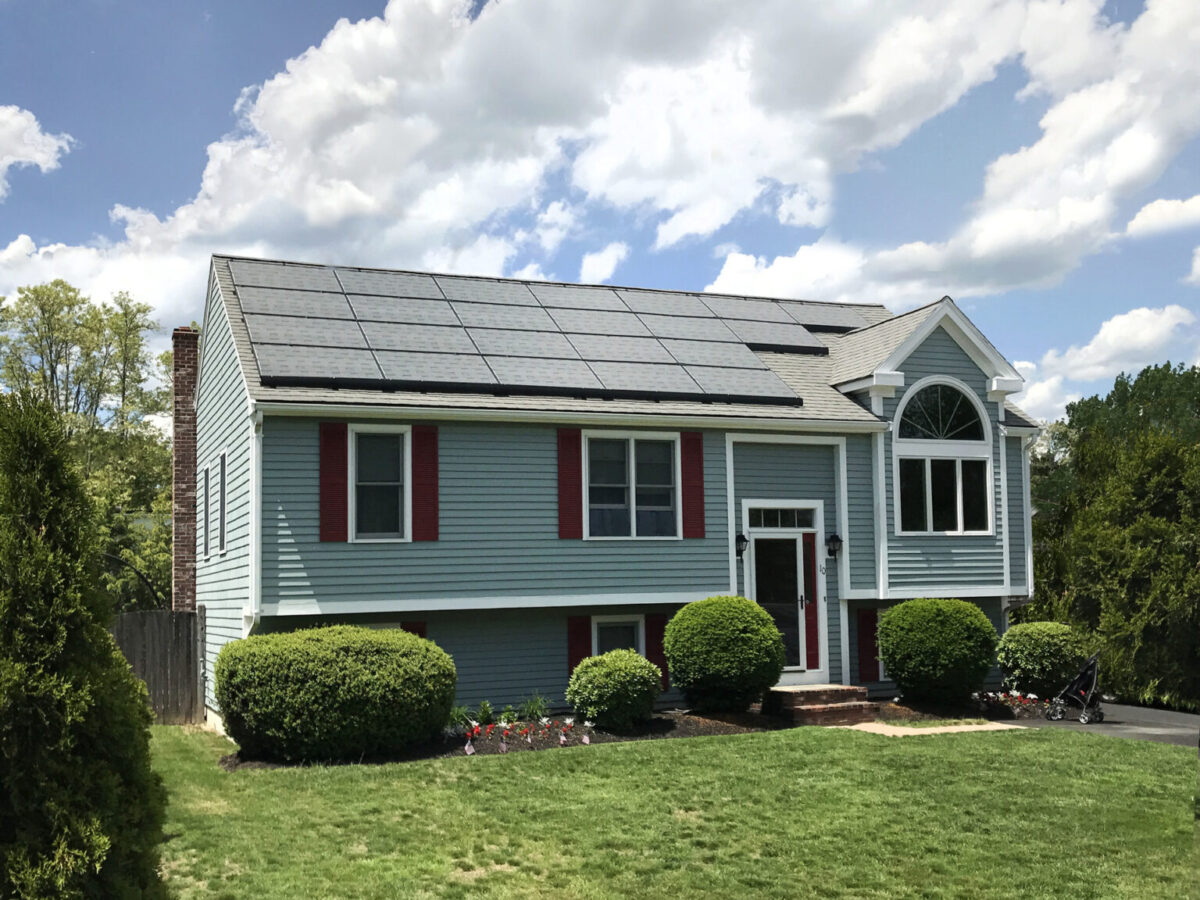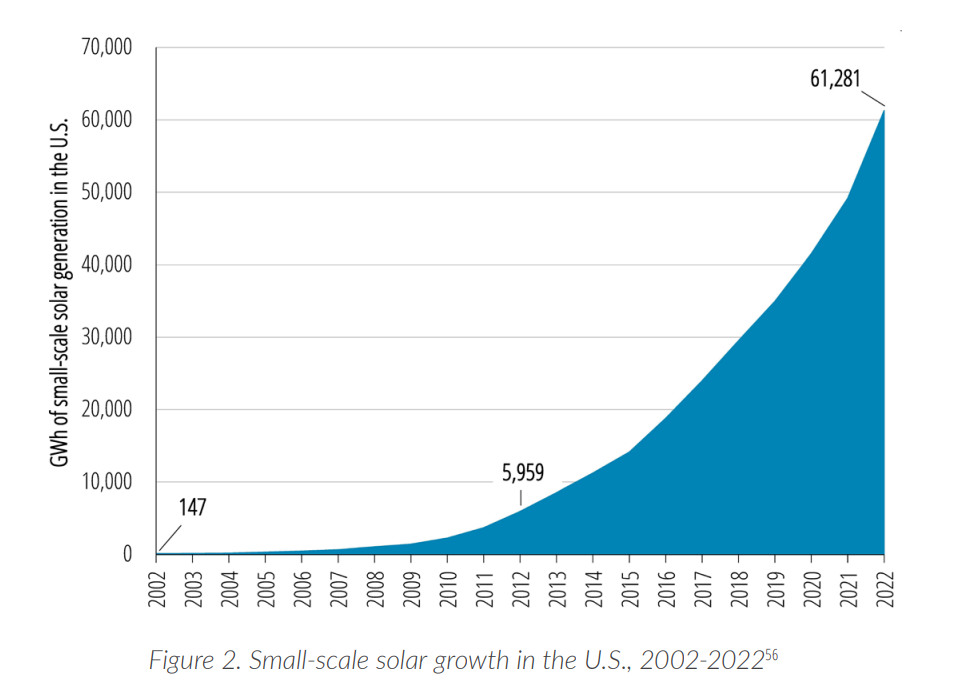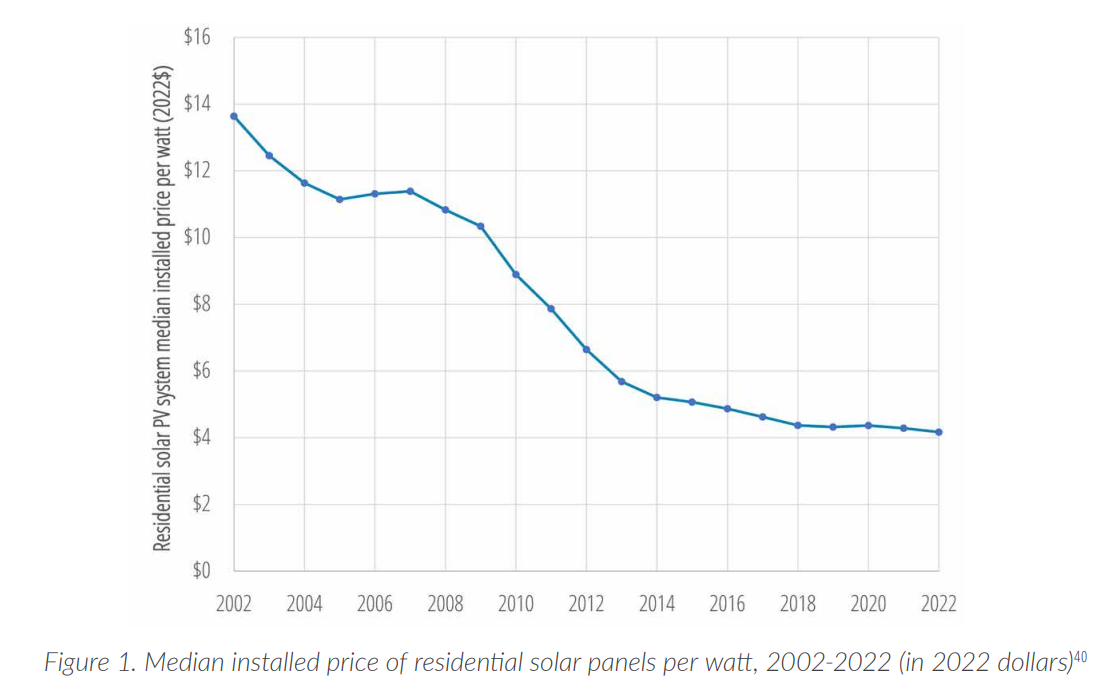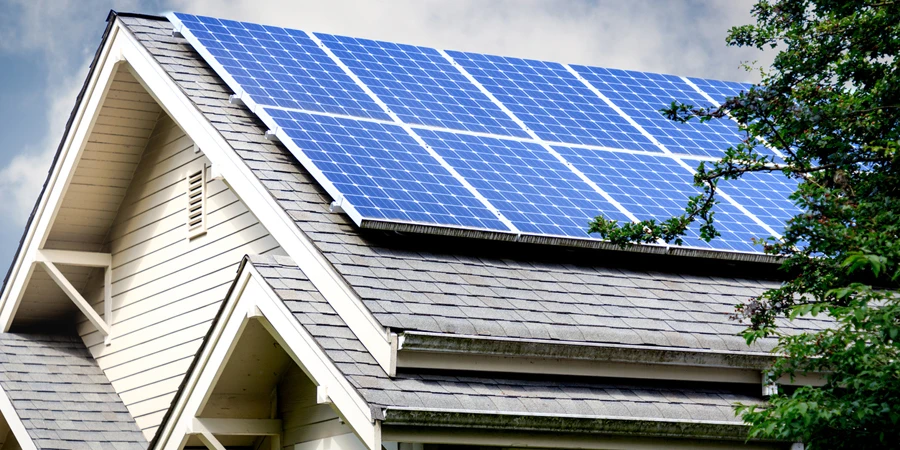Environment America says in a new report that rooftop solar could meet 45% of US electricity demand, despite currently only accounting for just 1.5% of electricity consumption.

Among the leading sources of electricity, solar has the unique advantage of being able to be installed in a distributed fashion, integrating it with the built environment, preserving land and reducing transmission infrastructure needs. Rooftop residential solar can offer homeowners bill savings or price predictability in the long run, and when paired with a battery, offers a value-add of backup power and extreme weather resilience.
A new report from Environment America, “Rooftop Solar on the Rise,” celebrated the significant growth that rooftop solar has undergone over the past decade, and laid out the long runway for the potential that lies ahead.
Environment America modeled the viable technical potential for rooftop solar in the United States, finding that it can serve 45% of U.S. electricity demand based on 2022 levels. In 2022, rooftop solar generated about 1.5% of the total electricity consumed.
In 2002, only 147 GWh was generated by solar, by 2021, that figure increased to 5,959 GWh. As of the end of 2022, rooftop solar generation has swelled to 61,281 GWh, or 61 TWh. More than 3.9 million American households have opted to move forward with rooftop solar.

And yet, the report notes that the United States “has only scratched the surface” when it comes to tapping the potential of rooftops to generate local, clean electricity. Solar panels on small buildings, including homes, have the potential to add 926 TWh of generation. The methodology for arriving at this total can be found in the report.
Large, flat commercial and industrial buildings represent another development opportunity. Environment America said warehouses alone have the potential to host 185 TWh of generation each year, enough to power over 19 million US homes. More than 100,000 large retail buildings across the United States could host enough power for the equivalent demand of another 8 million homes, said the report.
Rooftop solar offers “myriad benefits for the environment and consumers,” said the report. This includes reducing the need for dirty power plants and expensive transmission lines, providing lower costs, and can help to increase the grid’s resilience to extreme weather and other shocks.
Distributed solar helps squeeze other emitting sources off the grid. Take the 1.4 GW Mystic Generating Station serving the ISO New England grid operator region. The natural gas plant used to be fired up in the winter to prevent blackouts, but the grid operator said increased solar capacity has made the grid reliable enough to shut Mystic down. More than 5.4 GW of solar, most of it rooftop, has helped enable the transition away from fossil fuels, even in the harsh New England winter.
Another environmental benefit of rooftop solar is the reduction of land use for energy development, sometimes referred to as “energy sprawl.” For each gigawatt of rooftop solar installed in lieu of utility-scale projects, over 5,200 acres of land are saved.
Further, rooftop solar can save the nation on rising transmission needs and costs.
“Because rooftop solar generates power that can be used on-site reduces the need for transmission from central generating stations, potentially saving states and municipalities time and money on their energy transitions,” said the report. “To reach renewable energy targets, some expansion of transmission infrastructure will be necessary, but maximizing the potential of rooftop solar can help to minimize the amount we need to build.”
Solar is also now the most cost-effective new generation source in most markets and most conditions in the United States. On average, new-build solar costs 29% less than the next-cheapest fossil fuel alternative.
For homeowners, rooftop solar represents long-term bill savings and predictability. Environment America said though the initial investment can be substantial, most buyers can expect to break even in about eight to nine years and can expect to save between $20,000 to $96,000 on bills over the 25-year-plus life of the system.

This content is protected by copyright and may not be reused. If you want to cooperate with us and would like to reuse some of our content, please contact: editors@pv-magazine.com.
Source from pv magazine
Disclaimer: The information set forth above is provided by pv-magazine.com independently of Alibaba.com. Alibaba.com makes no representation and warranties as to the quality and reliability of the seller and products.




